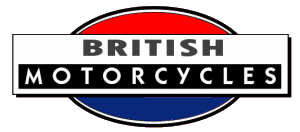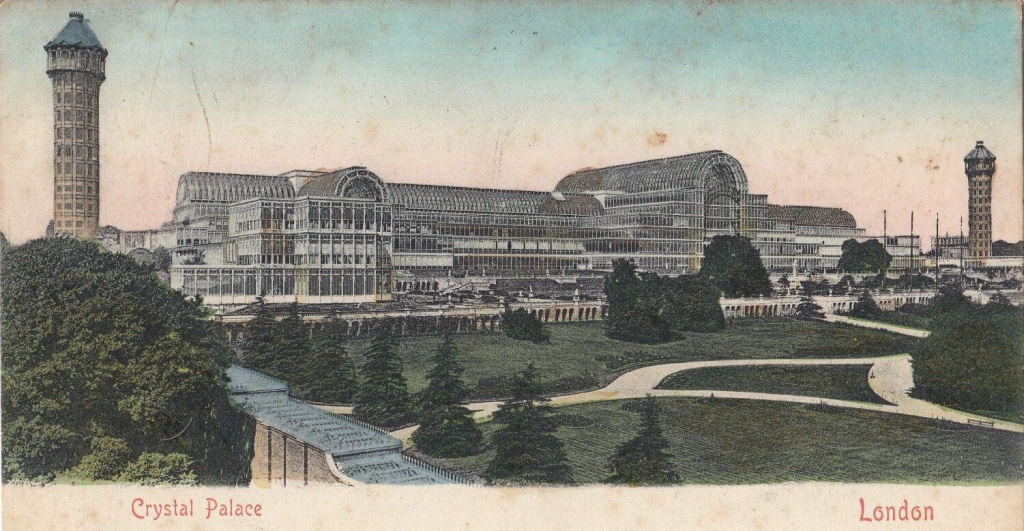



The Official Show of the Society of Motor Manufacturers and Traders ran from February 12th to February 24th.

The Chase Motor Bicycle, with Eisemann magneto.

The latest Swift motor Bicycle.

The Anglian 2½ h.p. Motor Bicycle, claimed to weigh under 100 lbs. all on.

The latest Bat Forecarriage, with 4 h.p. water-cooled engine, pump, and radiators.

The F.N. Motor Cycle. fitted with leather air scoop under forecarriage, exhibited by Mr. W. R. McTaggart.

The New Rover Tandem Forecarriage with 3 3/8 h.p. engine exhibited at Stand 203, Crystal Palace Show.
Among other novelties Chase Motors, Ltd., are exhibiting one of their excellent motor bicycles fitted with the Eisemann high-tension ignition. The dynamo is driven by means of two spur wheels on the engineshaft, one of which is constructed of fibre. The Chase forecar, which is shown fitted with two capacious toolbags and a pair of voiturette acetylene lamps, presents a very handsome appearance.
In our report of the Swift motor bicycle in last week's issue, we mentioned that a Minerva engine was fitted. The company inform us that they are now manufacturing their own engine for this machine.
Messrs. Dunhill's, Ltd., have, among other interesting exhibits to be seen on their stand, a remarkably good watch and holder to be attached to the handlebar of a motor cycle. The watch is held in a strong case mounted on springs, consequently the difficulty of carrying a watch owing to vibration is overcome. By withdrawing a bolt the winding mechanism of the watch is exposed, and a quarter turn of the case to the right allows the watch to be removed, and, if need be, carried in the pocket. Messrs. Dunhill's are also showing their number plate and bracket, made to fit any lamp; also their speed indicator, which is made in two qualities, registering from five to forty-two miles per hour, and five to twenty-eight respectively. Besides the above a fine display of gloves, goggles, and hand warmers, etc., is to be seen on this stand.
Mr. H. W. Stones, of Lincoln, who was one of the first to introduce the V belt, is showing a new belt of this type, known as the Keystone. It is a five-ply belt, and these plies run vertically— that is to say, at right angles to those used in current types. This is claimed to ensure greater flexibility, no buckling of the inner ply, and no loosening of the rivets. The belt found on will be the stand of Messrs. Tullis and Sons, South Wing. To suit this belt Mr. Stones has invented a new pulley. As will be seen from the illustration, the bottom of the V is flat, and is perforated by square holes; consequently there can be no air cushion, and it is claimed the belt has three gripping surfaces.
Page 175
Novelties at the Crystal Palace.—
Mr. J. Leonard, Brockley Road, Brockley, S.E., is exhibiting a well-made motor bicycle manufactured by himself, and known as the Leonard. It is propelled by a 3½ h.p. M.C.C. engine, carried in a cradle in a loop frame, and fed by a Longuemare carburetter of ample size. A spare tank and all point back-pedalling brake are fitted. The N.S. Electric Storage Co., Horton, Kent, are showing on their stand a good accumulator, which possesses several novel properties. Firstly, it will stand, so the company affirm, any amount of jolting and rough treatment; secondly, the plates cannot buckle, nor the paste drop out; thirdly, owing to the porous nature of the litharge[1] and the separators used, should the cell be broken and all the acid escape, sufficient of the electrolyte will be retained to run the machine for a considerable time.
The Anglo-American Motor Co. are exhibiting the Vindec motor bicycle, the West End agency of which they have lately taken up. This machine is a thoroughly practical little mount, and seems likely to become very popular. It is fitted with a 2¾ h.p. F.N. engine and carburetter, upon the efficiency of which it is needless to comment. Two band brakes are fitted, and the back mudguard is hinged so that it can be swung back, leaving a large portion of the tyre exposed, which is an undoubted advantage should punctures prove troublesome. The air inlet to the carburetter has been improved, so that the air now enters from beneath, instead of at the side. This, the makers claim, ensures a more perfect mixture. A capacious toolbag is supplied, and the oil-can is carried externally, so that should leakage of oil ensue, it will not soil everything carried in the bag.
At the time of writing our last report the Durkopp motor bicycle had not arrived at the Palace. Now, however, we are able to explain a few details about it. The chief feature of this machine is that the engine bearings run on balls, a practice which is followed by few other makers of motor cycle engines. The wheelbase is long, a band brake being fitted to the rear wheel, and a rim brake to the front wheel.
The ignition is of the make and break type, the carburetter being a spray pattern, made by Durkopp and Co. The transmission is by V-belt, while the machine shown has 2½ h.p. engine, with automatic inlet valve. The 3¼ h.p. engine has mechanically operated valves. Mr. Baedeker, the importer of this machine, is also agent for the Sthenos carburetter which is exhibited in sizes suitable for motor cycle engines.
Messrs. Lewis, of Liverpool, show an ingenious number plate, the figures on which are transparent. This is hung across the top of the hood of any lamp. They have also a fine stock of motor clothing, motor cycle lamps and horns.
The Palmer Co., Ltd. (stands 47 and 48) are undoubtedly to be complimented on the splendid display they make of their new motor cord tyre. (A full description of the novel and ingenious methods employed by the Palmer Co. in the building up and construction of this tyre, accompanied by illustrations, appeared in our pages a few weeks back.) The manner in which it is staged makes one of the most attractive, if not the most interesting stand at the show, reflecting the greatest credit on those responsible in thus bringing before the public the care that is exercised in the manufacture of the new cord tyre, both for motor cycles and cars. Operators are at work showing the process by which the crude airless cord is gradually built up into the complete tyre, and although their skill is devoted to tyres of a larger description, it is illustrative of the time and trouble that are taken by the Palmer co. in turning out a suitable tyre for motor cycle work, as the cord tyres for the smaller vehicles are built in exactly the same way. We recommend all motor cyclists to call at the Palmer stand and examine this most interesting exhibit.
The Motor Cycle February 23rd 1904, pp174-176
Notes: 1. Litharge is one of the natural mineral forms of lead oxide, PbO.
If you have a query about this page please contact us